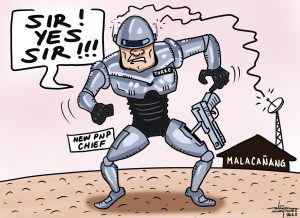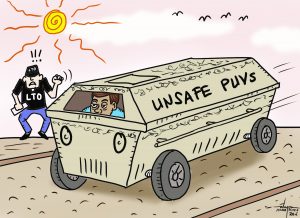Calamities are indeed two or even three ways straits. They caused severe sufferings to certain sectors of the population; they galvanize people into united actions to help the victims; but they also bring to the surface the greed of others.
Yes, the three strong earthquakes and its hundreds of aftershocks that hit several cities and municipalities in Mindanao last October this year were concrete examples of such situations.
Thousands of families lost their homes. Government infrastructures were destroyed. And there are several thousands of families staying in overly congested evacuation centers depending on assistance from the government and other donor groups for their survival.
The calamities though had mobilized government units to pool resources to help the victims find temporary shelters. And they tied up with various charitable, corporate, and even individual donors so that food ration and other daily needs of the victims can be provided. And relief assistance keeps on coming.
We are even hoping that banks and other financial institutions, both government and private, will humanize their interest rates for those who would borrow money to start again from the rubbles.
But certain sectors find opportunities to make fortunes from the earthquakes. An example is the proponent of the idea to require students to procure and bring to school hard hats. According to some explanations given to the students, the hard hats will give them viable level of safety from fallen debris in the event of strong temblors. Somehow it sounds reasonable. But given the video-documented reactions of people inside buildings in previous earthquakes, we wonder if the students even remember where they place their hard hats and get them before running out from the classrooms.
Then there was this report from a regional television news program with the mayor of Makilala town as interviewee. Makilala is one of the hardest hit municipalities in Cotabato Province. In his statement the local chief executive said that the local government is now looking for lands that are suitable for relocation sites for the people displaced by the earthquakes – they who could not anymore be permitted to go back to the location of their destroyed houses because of the “No Build Zone” policy imposed after the earthquakes.
But according to the town mayor, the owners of the lands the LGU has considered for relocation are jacking up their selling prices. No one from among them is willing to part with their properties at prices below P1,000,000 per hectare even if their lands are located in the municipality’s interior barangays.
That is why, the mayor said, he is begging from the evacuees for more patience while the Makilala LGU is doing its best to find relocation areas that can best suit their needs.
These landowners could be seeing pots of gold from the hardships currently experienced by their fellow residents in that forsaken Cotabato town.
*******************
Some three years ago the City Government of Davao started the development of the second phase of the relocation area at Los Amigos, Tugbok district. According to Roy Ryan Rigor, officer-in-charge of the City Housing and Homesite Department, the second phase of the relocation area consists of some 511 lots with an average of 60 square meters each except for corner lots which are about 112 square meters per.
Yes, we saw then that it was already imperative that the Phase 2 of the relocation site be developed. During that time we were aware that informal settlers in the city were multiplying in numbers much faster than the sizes of relocation areas made available. This can be clearly seen in the Piapi Slum Improvement and Resettlement (SIR) section Along Quezon Blvd. Before, the lots at the SIR were determined by the number of families accounted for in the census. Today, the families and houses sprouting in Piapi are twice as many as the residents in the area when the SIR project was completed several years back.
What used to be the seawall and the remaining shoreline then, cannot anymore be seen. These are already full of makeshift houses. Even the small spaces in-between houses constructed on the SIR- defined lots are now occupied by structures inhabited with more than one family. Moreover, some house owners have maximized their areas by putting up concrete firewalls and in the process expanded the floor space of their respective dwellings.
Thus, with the development of the second phase of the relocation site at Los Amigos, the city may have already reduced, say by some 511 families, the number of informal settlers that were monitored at that time occupying critical spaces in the city’s downtown.
Like our local officials, we are also hoping to see a Davao City devoid of new squatter colonies with the completion of the development at the planned community at the city’s relocation site. That is on the assumption that indeed the city has made good its promise to work on, and has completed, the Los Amigos Relocation Site Phase 2.
We hope as well that the new site had been provided with all the basic amenities like power and water connections, paved roads, communication lines, and others. These amenities are what make a community even more functional and socially engaged.
-30-


